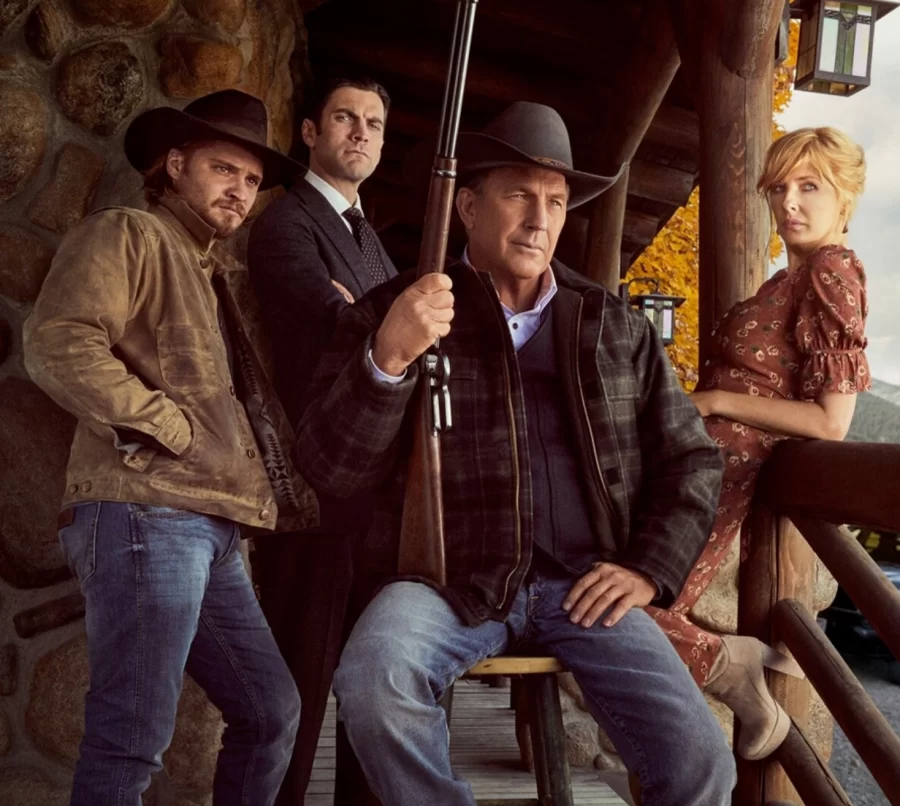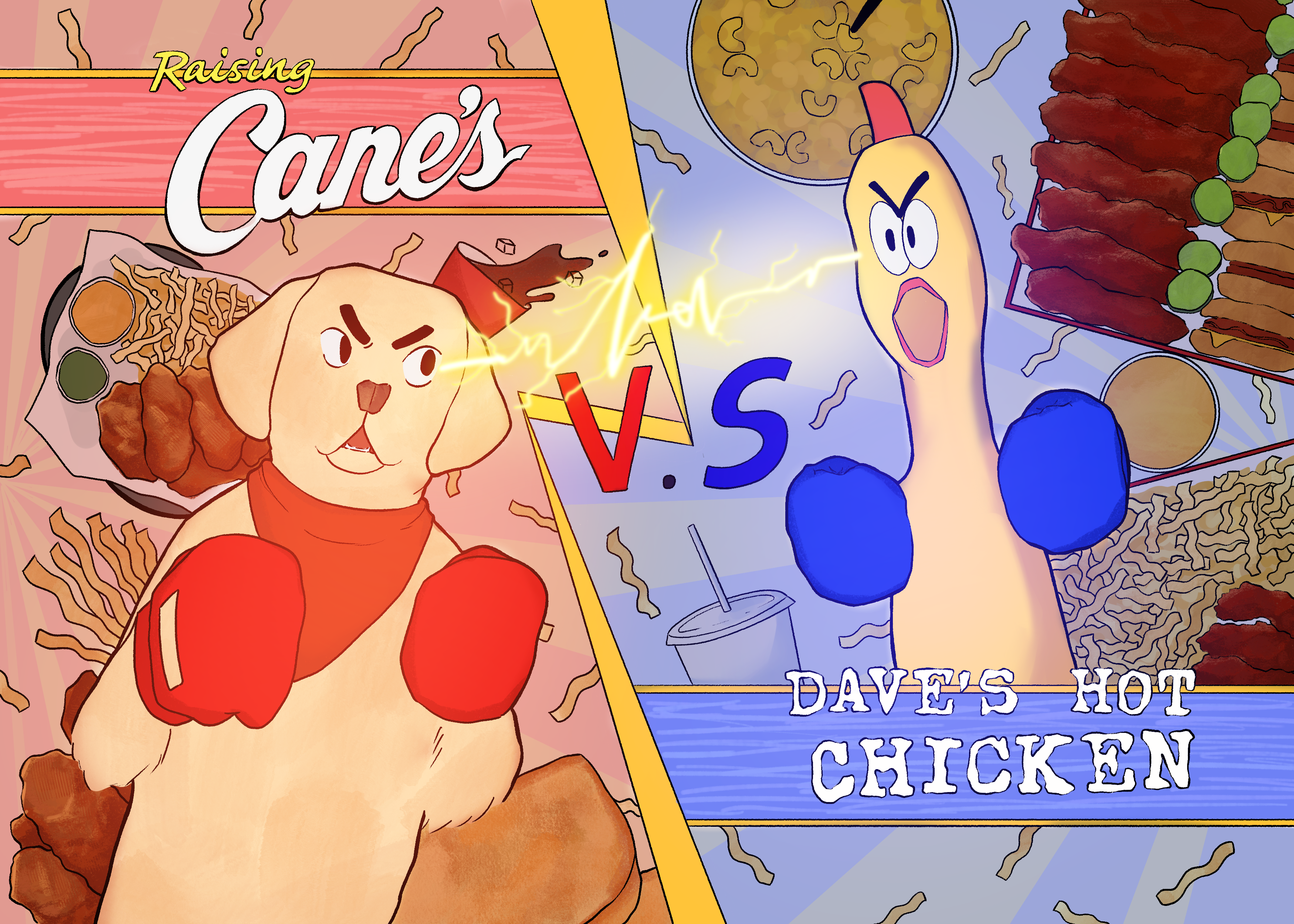“Yellowstone” showcases the cultural battle between old and new ways of living
Entertainment Tonight
The Paramount Plus original “Yellowstone” shows the constant battle that Native Americans and ranchers face to keep their land in a world whose main focus is the development of new infrastructure and profit.
March 15, 2023
The Paramount Plus Original “Yellowstone” steps away from the glamorous, overdramatic seams of Hollywood television and into the grueling realities faced by ranchers and Native Americans in the rolling plains of Montana.
Premiering in 2018, “Yellowstone” has gained an enormous fanbase. Season 5, which premiered in November of 2022, received 12.1 millions views. The show was also named the most watched television show of 2022, and was the most watched cable premiere since 2017.
This show is rooted in the struggles that Native Americans and ranchers face to maintain their way of life: progress and development is the enemy.
With the help of his exceedingly strong-willed and loyal daughter Beth Dutton (Kelly Reilly), power hungry, Harvard law educated son Jamie Dutton (Wes Bently), fierce top ranch hand Rip Wheeler (Cole Hauser) and compassionate, internally conflicted son Kayce Dutton (Luke Grimes), Ventura native Kevin Costner does anything to keep the Yellowstone, the largest property in Montana and one that has been in his family for six generations. The heir to the throne, Kayce, who lives with the Broken Rock tribe, wants nothing to do with the drama and complications that come with his family. However, he is forced to come back by his father’s persistence to see him and his son, Tate (Brecken Merrill).
The connection between the Dutton family and Native Americans of the Broken Rock tribe is developed by Kayce’s marriage to Monica Dutton (Kelsey Asbille Chow), a Native American woman whose heart and soul belong to the reservation. The show tackles the mutual angst that the Duttons and the Broken Rock tribe face against new developments, as well as the clash between the Duttons and Native Americans over land management and rightful ownership.
“Yellowstone” shows the commonalities between the Duttons and the Broken Rock tribe as they hang on by a thread to the land that has belonged to them for generations. Both groups’ land is constantly threatened by developers of new infrastructure, who desire the land for skiing resorts, apartment complexes and a new airport. The developers, who act as the antagonists of the show, see nothing but the cash flow potential of new man-made installations. Throughout the five seasons, the protagonists band together to fight against their common enemy: industrial progress.
But with a mutual enemy, there still comes dispute. Tension between the Natives and the Duttons stems from their inability to work together. The Natives will do anything to expand their reservation, desiring to take back the Dutton’s land for the sake of providing jobs and a stable way of living for their people, while keeping their powerful spiritual connection to the planet. John, the head of Yellowstone, is unwilling to relinquish land to the Native people in order to protect the cattle business that his family has owned for 100 years.
“Yellowstone” highlights the significance of farm life, and the issues that infrastructure poses. In the 1800s, 90 percent of people lived on farms; now it is down to less than one percent. As people have migrated to cities and farm life has come close to diminishing, fossil fuel and carbon dioxide emissions have skyrocketed. When purchasing crops or meat locally, people are helping to create a more ecologically friendly planet. The Worldwatch Institute, an environmental research organization, found in a study that food travels anywhere between 1,500 to 2,500 miles to reach your plate. In “Yellowstone,” the Duttons are fighting for a local family cattle ranch to stay alive, so future generations may continue farm life.
The producers of “Yellowstone” strive to portray Native American life correctly, as well as incorporating the struggles that many Native people face. In our world today, reservations are constantly under attack—99 percent of the land which once belonged to Native Americans is now gone. It was also found that those living on reservations are facing intense financial issues. In a study by NPR, it was found that 69 percent of Native Americans have significant financial issues.
Show creator and producer Taylor Sherdian shot scenes on the Crow Indian Reservation and worked closely with them to portray their ways of life correctly. In an interview with Variety Magazine, the tribal chairman of the Crow Reservation AJ Not Afraid stated, “Our perception has always been more stereotypical, but here the folks at the show came out and reckoned the terrain and the people and they got a better taste of the native side.”
In the show, there are scenes of Native American spirituality being expressed on the land, the struggle of many to establish a stable income and scenes of racial profiling both in and outside the reservation.
“Yellowstone” also shies away from the dainty, flawless women of Hollywood and into the strong, powerful women of Montana. Beth Dutton, for example, exemplifies what it means to be a strong woman. Beating up a white person who racially profiled Monica, making grown men cry, going outside and smoking a cigarette after being blown up in a building and managing the economics and politics of the ranch, Beth is a powerful force not to be reckoned with. There is also Monica Dutton and other female members of the reservation, who are constantly fighting to keep their way of life while remaining true to themselves
While showcasing the beauty of living on farms and reservations, “Yellowstone” displays how many people practicing these methods of living face challenges in a world whose main focus is developing and modernizing infrastructure.
Those who are interested in watching can find “Yellowstone” on Paramount Plus, Amazon Video and iTunes. There are also prequels, including 1883, which shows how the Duttons migrated to Montana after the period of westward expansion, and the newest prequel installation 1923, which follows the Duttons and their struggles during the Great Depression. Both prequels can be streamed on Paramount Plus.














John Doe • Mar 15, 2023 at 11:07 pm
The most American thing about American culture is the way we departed from civilization to expand into the rocky wilderness, into the unexpected. It’s what makes Americans unique. Our land stretches from coast to coast. From trees to forests. From snow to mountain.
We have big plains and we have big factories that we need people to fill it in. Different kinds of people too, working in harmony because they are FREE to do so in this country.
Theodore Roosevelt was one of the best Americans to grace the White House and he came from a aristocratic, rich family… but what did he do? He went into the Dakota territory to live a rugged life. I respect those kinds of people. The kinds of people who ditch material worth to live life the natural way: simple. Buddha and Theodore Roosevelt would be pretty big examples that I could name right now.
Theodore Roosevelt was a huge environmentalist and warned against the social and environmental implications of industrialism. Nevertheless, he wanted to find a compromise to keep the natural beauty and the beautiful cities in this country.
If there is one thing that I learned from Theodore Roosevelt, I would say that respecting nature and appreciating it is not only patriotic and manly, but very good for the environment and the world.